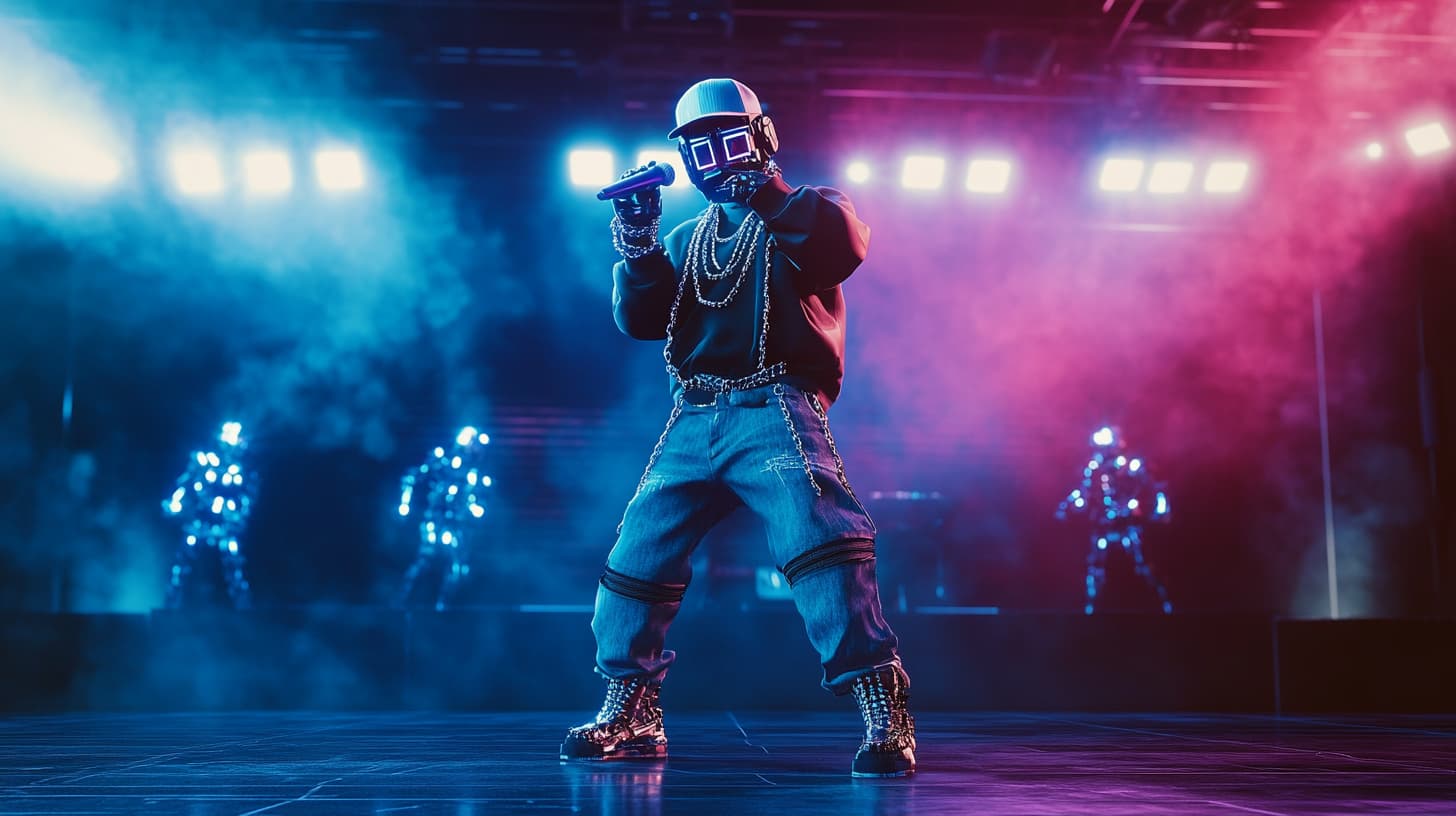
Rap music is no stranger to evolution – and now, artificial intelligence is adding a fresh twist. The use of neural networks for rap has opened up a new world where machines can help create original lyrics, generate beats, and even inspire a whole new style of songwriting.
This article explores how AI is changing the game in rap, from unique song generation to the way rappers interact with new tools. We’ll look at what neural rap really is, how AI-generated tracks are made, and what this all means for the future of hip-hop.
What Is Neural Rap
Neural rap is a new form of musical expression where artificial intelligence, particularly a neural network, plays a role in the creation of rap songs. Using large datasets of lyrics, flows, and beats, AI systems can generate original verses and mimic the styles of different rappers. The process blends technology with creativity, resulting in something both familiar and entirely new.
Here’s how AI contributes to the creation of neural rap:
- generates original lyrics based on learned patterns;
- mimics the style of specific rappers;
- creates unique verses from scratch;
- suggests rhymes or flows to inspire human artists;
- adapts to various sub-genres and moods.
These tools don’t just copy – they help artists innovate. Whether you’re a new rapper looking for inspiration or a producer seeking a fresh sound, neural rap offers a surprising and modern way to explore the boundaries of music creation.
AI-Generated Rap Tracks
AI-generated tracks are no longer just experimental – they’re already making noise online. From viral YouTube hits to underground mixtapes, neural networks have been used to create everything from fun parody songs to serious lyrical experiments.
Some standout examples include:
- a track where AI mimicked the style of Kanye West;
- a generator that built an entire verse in the flow of Eminem;
- collaborative songs where real rappers rapped over AI-created beats;
- freestyle battles between AI bots trained on lyrics;
- remix projects where AI added original lyrics to classic beats.
These tracks show that AI can do more than replicate – it can surprise, experiment, and push the boundaries of rap’s creative space. While not perfect, these songs hint at a future where AI becomes a regular part of the music generation process.
How Neural Networks Are Trained to Write Lyrics
Training a neural network to write lyrics starts with feeding it massive amounts of data – songs, verses, rhymes, and slang. The goal is to teach the AI how words, rhythm, and style come together in a typical rap track.
Here’s how the process usually works:
- collect a dataset of thousands of lyrics;
- use AI models to analyze rhyme schemes, vocabulary, and flow;
- train the network to recognize and replicate lyrical structure;
- fine-tune the model for different artists or moods;
- test the output and adjust for coherence and originality.
This training process helps the generator create lyrics that are not only grammatically correct but also feel authentic to the genre. While AI still lacks emotion and personal experience, it can produce surprisingly creative verses that can inspire real rappers or complete an unfinished song.
Functions of Logistic Neural Networks
Logistic neural networks are often used to manage the decision-making processes behind AI-generated music. In rap, they help determine which lyrics fit best, which beat matches a certain verse, or how to maintain a consistent style throughout a track.
One example of this in action is the platform chataibot.pro. While primarily designed to provide access to ChatGPT without foreign numbers or cards, it can also be used to assist with lyric generation, idea brainstorming, and verse editing through its chatbot, browser extension, or Telegram interface.
Users can input a topic or style, and the AI will help create original lines or suggest creative twists – acting as a smart support tool for any rapper or content creator.
This kind of neural help doesn’t just speed up the writing process – it brings new possibilities to how songs are created and refined.
AI in Hip-Hop: Prospects and Limitations
AI is opening new doors in the rap world, from speeding up song creation to inspiring fresh lyrical ideas. It allows rappers to explore unique styles, test out new flows, and generate content faster than ever. But it also comes with clear limits.
Key points to consider:
- can quickly generate lyrics but lacks emotional depth;
- helps new artists but may reduce originality if overused;
- supports beat matching and structure but not live performance energy;
- encourages innovation, yet raises questions about authorship;
- creates surprise and novelty, but not cultural context.
While AI can’t replace human creativity, it can be a powerful tool to enhance it. The balance between inspiration and imitation is where the real challenge lies in using neural networks for rap.
Conclusion
Neural networks for rap are changing how music is imagined and made. From lyric generation to beat selection, AI brings speed, surprise, and support to both new and experienced rappers. While it can’t fully replace human emotion or cultural depth, it offers fresh tools that inspire and help artists create something new and unique.
As the technology improves, we’ll likely see even more original uses that blend creativity with smart AI support. For now, neural networks are not the future of rap – they’re already part of its present.

